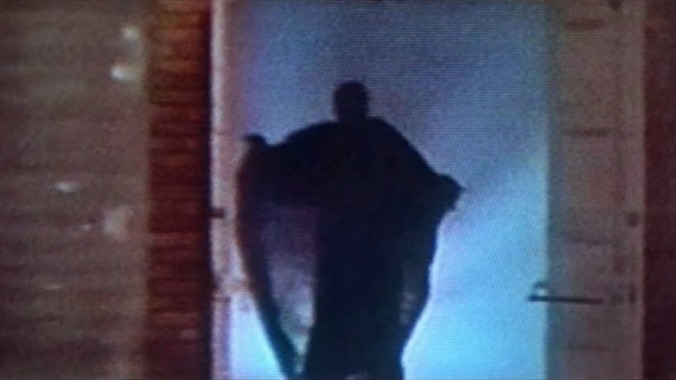Triple Threat: John Carpenter’s Apocalypse Trilogy
The horror maestro explored the end of the world in his iconic ‘80s and ‘90s trilogy

A story has a beginning, a middle, and an end. Maybe that’s why the trilogy is such a satisfying structure for so many epic series or curious corners of cinema history. This year in Triple Threat, Ken Lowe revisits another of cinema’s best trilogies each month, including some unofficial trilogies that have come to define a director, actor, or time in film history. You can follow the series here.
John Carpenter hasn’t been truly active since 2010’s The Ward, and cinema is poorer for it. Some directors who come up through B-movies cast aside their ruder, edgier impulses to ease their way into mainstream success. In decades of grungy gross-out sci-fi fantasy horror, Carpenter never compromised. Even as his budget and his audience grew, he still poured on the gallons of blood, body horror, and sledgehammer social commentary.
By 1982, Carpenter had directed iconic films like Assault on Precinct 13, Halloween and Escape from New York—stuff that’s been remade (poorly), fired the imaginations of other creators in other media, or completely redefined genres. The Thing, Prince of Darkness and In the Mouth of Madness are not by any means the only movies from Carpenter that could be argued deal with the end of the world—Escape from New York, Escape from L.A. and even They Live, to name a few, also play in the end times, or at least during the end of the world order. In those latter films, though, the destructive influence is a recognizably human sort of evil, and it’s of an oppressive and authoritarian sort: Even the aliens in They Live basically read as Reagan-era hyper-capitalists.
But, in the movies film writers have come to call John Carpenter’s Apocalypse Trilogy, there are indeed malign outside influences, but that’s not what’s causing everything to break down and doom mankind. It’s our own failings—of trust, of faith, of individual critical thought—that are going to screw us if we ever have to stand up to some unknowable force from beyond the void.
Straddling the ‘80s and ‘90s, Carpenter’s trilogy centers on three classic boogeymen of the apocalypse: Menacing aliens, Cthulhu-like outsider gods, and freaking Satan. All are mysterious, all are in what mystery writers would call a “cozy” situation where the victims/suspects are all confined together, and in all three films the only thing standing in their way are a skittish group of people who seem no more capable of handling it than you or I would be. These are grim, gross, nasty movies without a lot of hope. They’ve never really been Carpenter’s most successful films, but taken together and regarded side by side, they’re some of his most unforgettable.
The Movies
The Thing, one of the most fiercely unique-looking movies Universal ever greenlit, began as an exercise in trying to milk an intellectual property—like so many studio projects. Attempts to remake the novel on which 1951’s The Thing from Another World was based began in the 1970s, and at different points, Tobe Hooper and John Landis were attached to direct the project. But nobody liked their pitches, and the thing was shelved until a little film called Alien tore up the box office and suddenly made sci-fi horror seem a bankable conceit again. Carpenter, fresh off his success from Halloween, was attached.
It’s hard to imagine what the hell kind of film we might have gotten had Carpenter not turned the project around and employed Rob Bottin as his effects supervisor—at various points, Walter Hill and Sam Peckinpah were also being considered. Instead we got one of the absolute ickiest horror movies in memory. Set at an Antarctic research station, the film follows a group of isolated American scientists that include Kurt Russell, Keith David, Wilford Brimley and Donald Moffat as disaster descends upon them. A group of Norwegian researchers chase a dog into the American camp, shooting at it to no avail before their inability to communicate brings about their demise. The Americans shelter the dog and go investigate the burnt-out, destroyed Norwegian camp, and a remote site the Norwegians were investigating.
The Norwegians have dug up a spaceship that appears to be 100,000 years old, and a creature that has been frozen in the ice for just as long. It turns out that this alien lifeform is a predator that absorbs its prey, and then perfectly mimics it. It’s the universe’s most devastatingly effective ambush predator, and if it isn’t stopped, it’ll take over the whole world in a matter of months. That’s a classic paranoiac 1950s Cold War-era premise, of course. But that is not the kind of movie Carpenter is here to direct, because the creature is not left to the imagination at all.
Audiences did not go for The Thing in 1982, at least not enough to make it a success. Critics of the time largely savaged it, and I guess I can see why: It’s a gross, seemingly nihilistic movie on the surface, one in which Russell and the other victims are trying and failing to stop a nightmarish enemy that outwits and outmaneuvers them again and again. You get the unmistakable sense that the creature doesn’t even feel malice in the same way you or I do, but in the way a tiger or an anglerfish does: The Thing’s mimicry is no different to it than stripes or a bioluminescent appendage, and it’s way, way scarier as a result.
-

-

-

-

-

-

-

-

-

-

-

-

-

-

-

-

-

-

-

-

-

-

-

-

-

-

-

-

-

-

-

-

-

-

-

-

-

-

-

-








































